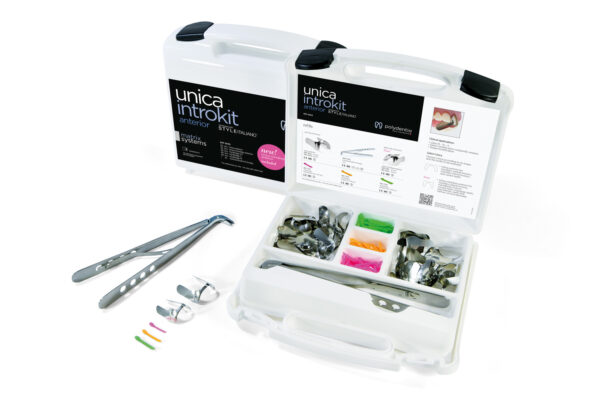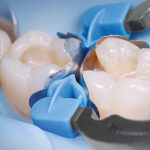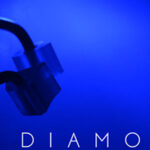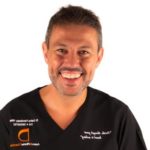15 Jul Dr. Lazar – class III restoration – Unica anterior
class III restoration with Unica anterior
by Dan Lazar

Dr. Dan Lazar
Dan Lazar, graduated from the Faculty of Dentistry in 2005 in Cluj-Napoca, Romania, followed by many post-graduate trainings in prosthetic and restorative dentistry in Romania and Europe. From 2007-2009 he was teaching at the Faculty of Dentistry, Iuliu Hatieganu Cluj-Napoca,at the Restorative department. Since 2005-2016 is working in a private practice in Oradea, Romania. From 2016 he work in his private dental clinic- Clinica LAZAR. Since 2015 he is an Style Italiano member.Dan Lazar is lecturing in Romania and abroad since 2009 on different topics: direct composite restorations, anterior prosthodontics and dental photography.
caso clínico
The patient came to our attention for esthetic rehabilitation; the analysis revealed a previous composite restoration on incisor 12 to be replaced and a carious lesion on canine 13. The following case shows the step-by-step direct restoration of incisor 12 using the Polydentia’s Unica anterior matrices.
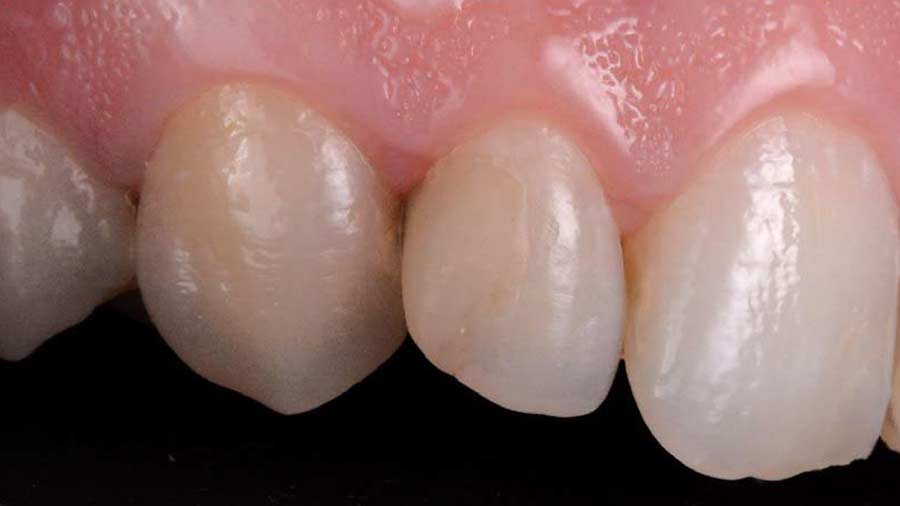
1: Pre-operative view of incisors 12 and canine 13 evidencing the old composite restoration which should be replaced on #12.
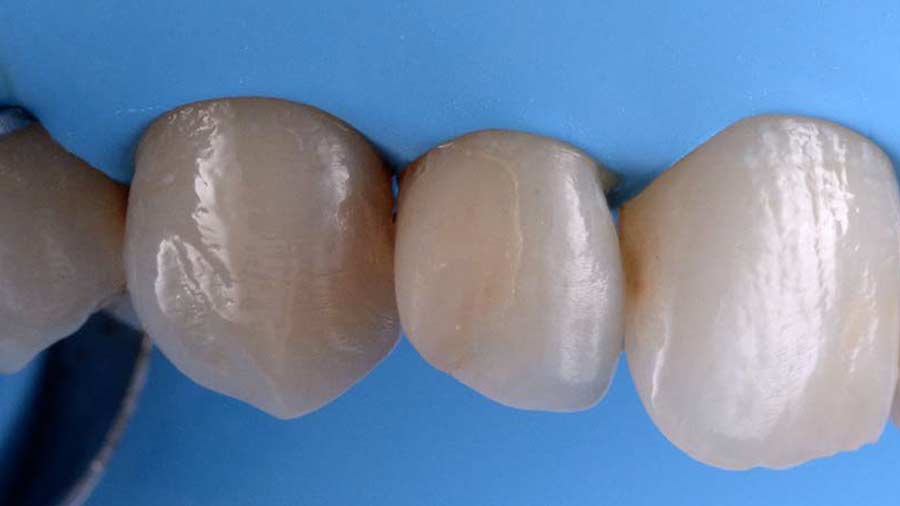
2: The quadrant under isolation.

3: The clinical situation after removal of the old restoration on #12, removal of the carious lesion on #13 and cleaning of the proximal area.
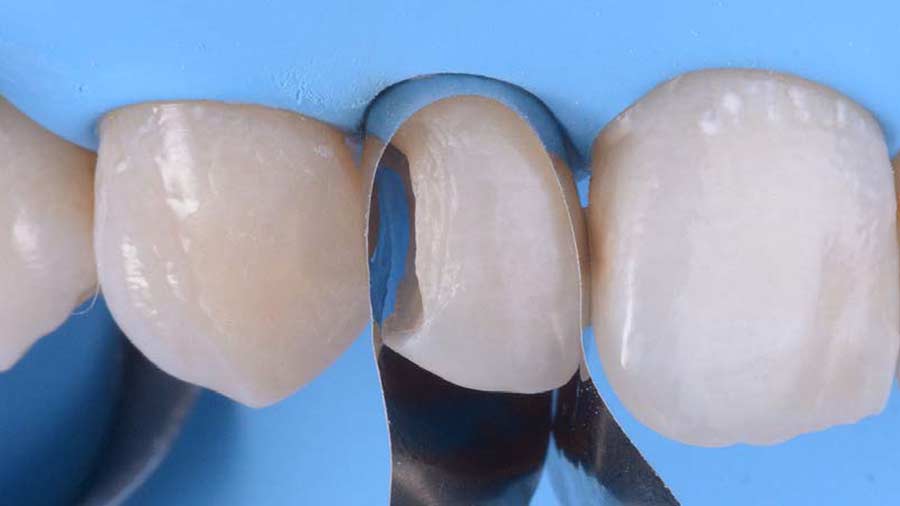
4: Canine 13 was restored before proceeding with the procedure explained in this case study.
Unica anterior matrix was placed for the restoration of incisor 12 . The contoured shape of the matrix embraces the teeth and help the practitioner to better see where the proximal edge will be placed. In this case, the stability of the matrices itself does not require wedges or myCustom Resin to stay in position.

5: Restoration of the distal edge on incisor 12.
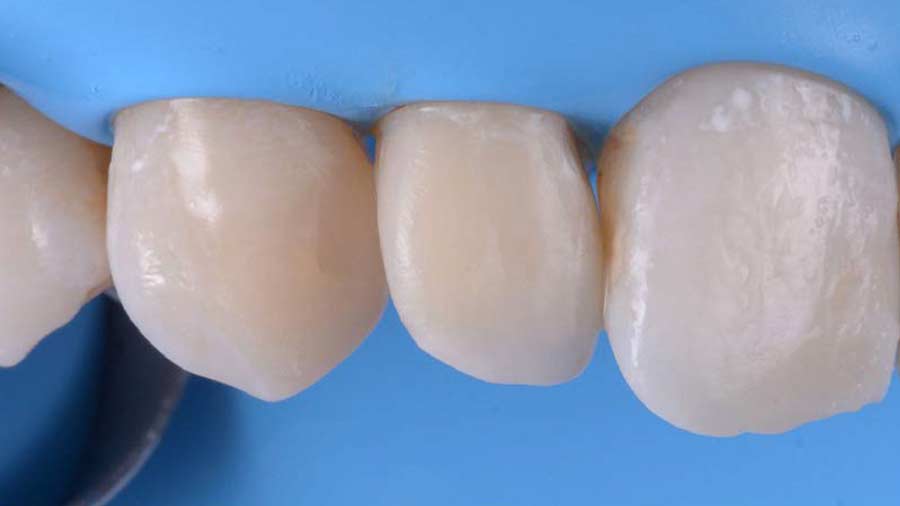
6: Incisor 12 after the removal of UNICA and contouring process of the restoration. The contoured proximal walls of the matrix ensure an accurate proximal morphology with minimal finishing.

7: The immediate post-operative view of the restoration after initial finishing and polishing. The final shaping and polishing procedure, not shown in this case was performed on a second session.
conclusión
Unica anterior powered by Style Italiano is a powerful tool for direct composite anterior restorations.
Thanks to its contoured shape, Unica adapts correctly to the different morphologies of anterior teeth and makes it possible to restore interproximal margins, even in case of extended Class III cavities where the tooth profile is missing.
otros casos clínicos
-
Cavidades adyacentes de clase II en primeros y segundos molares – QuickmatFIT Matrices seccionales anatómicas y myRing Forte – Dr David Gerdolle
Una paciente de 28 años, sin enfermedad sistémica, presentó una lesión cariosa que afectaba a ambos molares 46D y 47M. El siguiente caso muestra la restauración directa de la lesión con composite utilizando las matrices anatómicas seccionales QuickmatFIT de Polydentia en combinación con myRing Forte y las cuñas plásticas myWedge en forma de V....
-
Diamond24, 24 soluciones para sus restauraciones de cavidades de II Clase
Diamond24 y myRing Classico: 24 soluciones para sus restauraciones de Clase II. Lea el artículo escrito por el Dr. Chiodera (en inglés), que explica cómo obtener excelentes puntos de contacto con Diamond24 y myRing Classico para restauraciones de cavidades de Clase II. ...
-
Dr. Chiodera – Restauración de clase II en el segundo premolar – Quickmat Forte kit
El Polydentia myQuickmat Forte kit es un sistema muy eficaz para las restauraciones posteriores de clase II....
-
Dr. Chiodera – Restauración de clase III – Unica anterior
El paciente acude a clínica para un chequeo rutinario. Un primer análisis revela una lesión cariosa de clase III en el incisivo 21. Decidimos eliminar la lesión de caries y procedemos a restaurar la cavidad con una carilla de composite directa....
-
Dr. Chiodera – Restauración MOD en el primer molar – myQuickmat Classico kit
El Polydentia myQuickmat Classico kit es un sistema muy eficaz para las restauraciones posteriores de clase II....
-
Dr. Fernández – Modificación de forma – Unica anterior
El siguiente estudio del caso provee una explicación paso a paso del procedimiento utilizado para la elaboración de las carillas con la matriz anterior Unica de Polydentia....
-
Dr. Gerdolle – Clase II mesial, distal y MOD – MyClip 2.0 + LumiContrast
El caso muestra la restauración directa con composite de la lesión usando el anillo de matriz seccional Polydentia myClip 2.0, las matrices seccionales LumiContrast y cuñas de madera....
-
Dr. Gerdolle – Clase II MO en el primer molar – myClip 2.0
El caso muestra la restauración directa con composite de la lesión usando el anillo de matriz seccional Polydentia myClip 2.0, las matrices seccionales LumiContrast y cuñas de madera....
-
Dr. Giuseppe Chiodera – Replacement of old Amalgams – myRing Classico and Diamond24
The following case shows the step-by-step restoration procedure using Polydentia myRing Classico separator ring equipped with the new Diamond24 silicone tubes. ...
-
Dr. Giuseppe Chiodera – Sustitución de una restauración de clase V de composite – Unica anterior
Paciente de 32 años acude a nuestra consulta para la reposición de una clase V antigua de composite en un incisivo 21....

